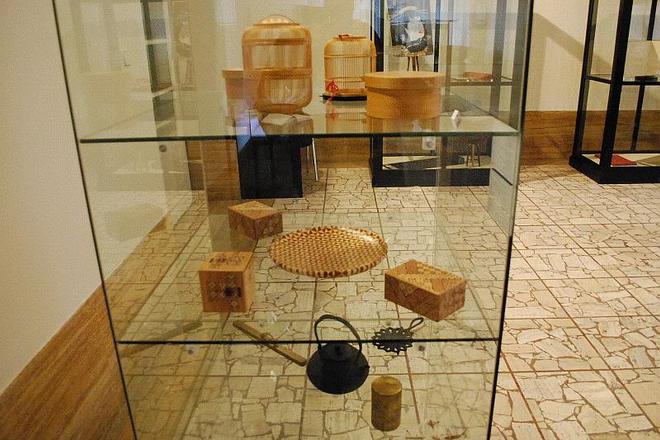IT IS probably not intentional that after you enter the Slovak National Museum (SNM) to head for the new exhibition of traditional Japanese arts and crafts you must first pass by a large Slovak country wagon and several rooms recalling the atmosphere of a typical Slovak village. Nevertheless, the contrast between the robust, rough style of Slovak folk art and the tiny, fine Japanese artefacts and the filigree of that country’s traditional crafts is quite marked.
The exhibition, entitled Handcrafted Form – Traditions and Techniques, was prepared by the Japan Foundation and has been touring Europe. It arrived in Slovakia from Belarus and after a month in Bratislava it will travel to other parts of Europe.
“One month is maybe the longest the exhibition stays in one place, as it is circulating in the region,” Akira Takamatsu, the Japanese Ambassador to Slovakia, told The Slovak Spectator at the opening ceremony on January 17, adding that “the items come from all parts of my country, as different traditions developed in each region”. The collection presents not only various regions, but also different artistic techniques as well as utilitarian items, striving to present a comprehensive picture of the materials, technology and aesthetics reflected by Japanese culture.
Various ceramics, such as porcelain, stoneware and mixed techniques, are interspersed with textiles from yarn-dyed and cloth-dyed silk, metalwork objects, hand-made paper, glassware, wood and bamboo crafts with traditional Japanese marquetry and lacquerwork techniques. The latter came to symbolise the crafts of Japan – hence the English term “Japanning”, coined in the 17th century to describe the European imitation of Asian lacquerwork originally used on furniture.
Though the exhibition is not extensive, it has been well-chosen and offers a broad view of Japanese handcrafts, ancient traditions, and techniques used in modern utility art.
“Our generation is still familiar with these [utility] items, although the younger generation might not know their use anymore,” Ambassador Takamatsu said in discussing artefacts such as a container resembling a cage that was used to hold insects and an ink-stone used by calligraphers. In addition to crafts of daily use, the organisers have assembled works crafted by artists using skills developed in a workshop environment.
The exhibition is co-organised by the Japan Foundation, the SNM and the Japanese Embassy and runs until February 19 at the SNM on Vajanského nábrežie, 9:00-17:00 every day except Mondays.

